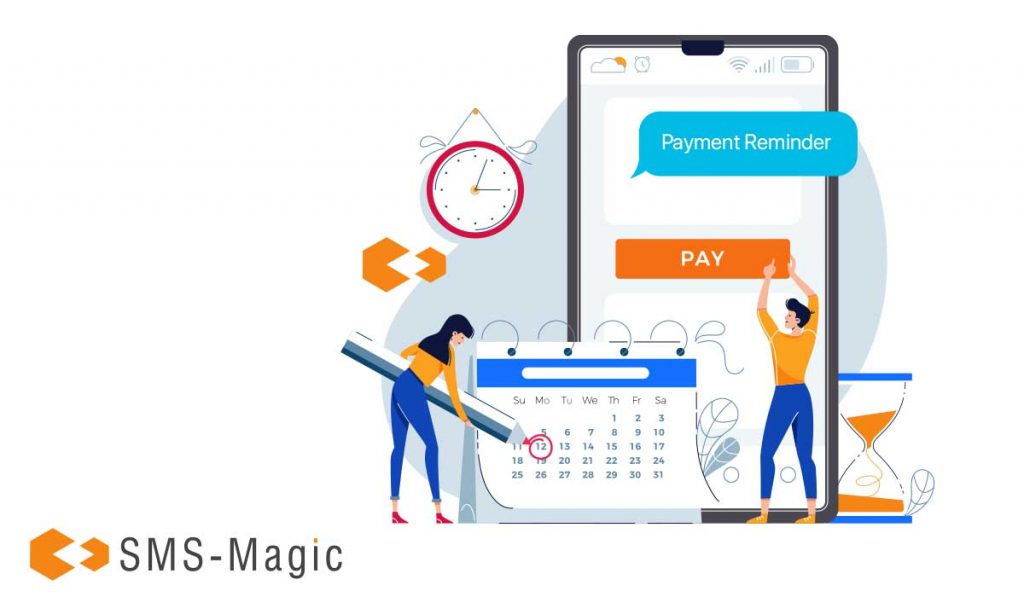
All it takes is 2 easy steps
If you're a winner, we will send you $100 Amazon gift card at Dreamforce!


Of all the online processes that have been accelerated over the years, payments may be at the top of the list. From one-day wire transfers to one-click ordering, quick payment processing is of value for both businesses and their customers. Bills, charges and other fees that are traditionally sent via email and direct mail can also be sent via text messaging and may boost the timeliness and responsiveness of payments received. A study conducted in 2020 by Weave found that 35% of customers are interested in paying with a text from their phone.
Businesses are wise to offer payment via text to improve their accounts receivable turnover ratios. This ratio quantifies how well companies are managing the credit extended to customers and their outstanding debt collection through a specified accounting period. Although the standard for the accounts receivable turnover ratio varies by industry, the higher you can get your numbers, the better.
Companies with high accounts receivable turnover ratios indicate that they collect payments from customers quickly without long waiting periods. A better ratio means that a business has stronger cash flow, an important goal in any industry. Through conversational business texting, payment alerts can be issued and processed faster, directly boosting that ratio.
You might have questions about the security of messaging transactions, and that’s understandable. We have several specific suggestions for protecting your customers and your company, and we’ll discuss them in detail in a later blog.
In the meantime, here are some of the ways conversational messaging can improve your accounts receivable turnover ratio, bolster customer trust and streamline your team’s efficiency.
Adding text messaging as another way to receive payments is a no-lose situation. Your customers are free to use whatever method suits their needs best. Solutions like SMS-Magic offer great flexibility when it comes to the types of payments you can receive via text. You may decide that a multichannel strategy best suits your payment needs. If so, you can choose to send monthly payments via text, one-off purchases via email, and overdue notices via direct mail. The best combination is the one that creates payments.

Payment reminders are a key tactic for improving your account receivable turnover ratio. It’s good due diligence for your business, and it provides transparency for the customer to ensure they are not caught off guard. Simple text message reminders go a long way in keeping finances on track.

Text messages have a 40% response rate, outperforming emails, phone calls, and direct mail. And while some customers may still prefer those methods to issue payments, younger generations prefer text messaging. Weave’s 2020 study found that 62% of buyers under age 35 would frequently or always pay with a text from their phone if they could. Mobile phones are integral tools in day-to-day communication and are no longer limited to conversations between friends and family. Use text messaging to collect payments and effectively future-proof your company for evolving customer preferences.
Customers who need clarification about their payments or charges can use text to clear the air. A 2014 industry survey found that 52% would be likely to text with a live customer support agent, and that the same percentage would prefer texting instead of their current method of reaching customer support. Customers who need bill or charge clarification can respond to their payment alerts via text. Bill transparency is an important element in building customer trust, and giving users the option to text questions quickly and conveniently will bolster loyalty in your organization.
Late payments cost small and mid-size businesses $3 trillion a year globally. A text reminder of upcoming payment due dates can prevent this, but it’s common for businesses to expect about 11% of their customer payments to be late. Financial mistakes can be sore spots for many customers, and texting can be a more comfortable method to discuss options instead of a phone call. If your business uses text messaging to seek overdue payments, take a gentle approach. Send your text message to late-paying customers to open the door for a conversation, rather than just alerting them of their late payment, which can come off as aggressive. Here’s an example of a softer approach:

“[first name], we noticed you didn’t make your latest payment. To discuss your options for payment plans or to adjust your services, reply HELP.”
Sending texts is one of the most affordable ways to collect payments. Your organization won’t have to deal with the hassle of direct mail postage, delivery and manual entry of returned checks or payment slips. When a customer pays via text, their transaction is automatically processed through your financial institution, freeing up team members to focus on more value-based business efforts. And when you automate these text messages, you get customers on a regular payment schedule with little overhead from your team members.
These benefits all contribute to an improved accounts receivable turnover ratio. To implement text messaging into your payment collection channels, schedule a demo with SMS-Magic today.
Stay updated on business text messaging
Text MAGIC for Demo to
USA: 36343
AUS: (61)409564682
UK & ROW: +44 7860017509
Email: care@sms-magic.com